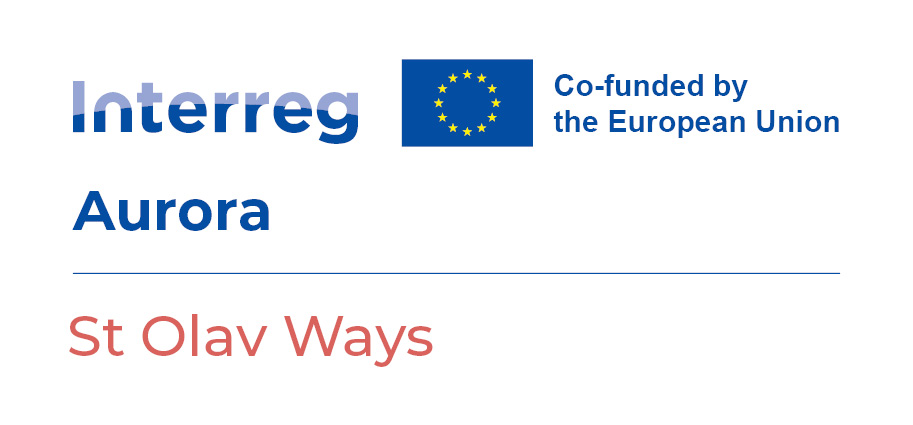The St. Olav Ostrobothnia Project
The development work for Ostrobothnia’s pilgrimage route, St. Olav Ostrobothnia, has been in progress since 2019. The route runs from Kokkola at the north end, to Kristinestad at the south end. The route consists of about 500 km of hiking trail through Ostrobothnia, divided into 21 walking stretches of a distance suitable for one day, called “day stages”.
The development work for the pilgrimage route has been carried out within the project St. Olav Ostrobothnia, the purpose of which has been to establish a European cultural and pilgrimage route to Ostrobothnia. The goal has been to join the Ostrobothnian route to the Norwegian-Swedish St. Olavsleden, which has Trondheim as its final destination. That way, this pilgrimage route becomes a part of the northernmost cultural route certified by the Council of Europe.
Our intention is to apply for certification during the first quarter of 2023, at which time we hope that our route will be certified as a European cultural route, and as a part of St. Olavsled. We see the certification of the pilgrimage route as a fantastic opportunity for the whole of Ostrobothnia to become a part of Europe’s network of certified cultural routes. This would increase the visibility of the whole region and place us more markedly on the map of Europe. The route offers organisations, companies, associations and municipalities excellent opportunities to develop and market their products and services to local, national, and international hikers and tourists. Link to the European Council’s list of certified routes: https://www.coe.int/en/web/cultural-routes.
The St. Olav Ostrobothnia project has been granted funding through Aktion Österbotten and the Ministry of Education and Culture, as well as from The Swedish Cultural Foundation and the Harry Schauman Foundation. Kvarnen Samkommun (joint municipal authority) in Kronoby has the role of project owner, while KulturÖsterbotten and Kristinestad Business Centre Ltd. are participating in the realisation of the project.
The project group – contact people:’
- Carola Wiik, project manager, Kvarnen samkommun
- Martin Näse, route planning, Kvarnen samkommun
- Heidi Hummelstedt, historical verification, natural and cultural heritage, KulturÖsterbotten
The following individuals are also members of the reference group:
- Angelique Irjala, Kristinestad Business Centre Ltd.
- Åsa Blomstedt, KulturÖsterbotten
- Ann-Sofi Backgren, the Kvarken Council and The Agency for Rural Affairs, Finland
- Annina Ylikoski, the Regional Council of Ostrobothnia
- Lilian Petterson-Smeds, Oravais Local History Society
Project facts:
- Project owner: Kvarnen Samkommun
- Project participants: KulturÖsterbotten and Kristinestad Business Centre Ltd.
- Project area: Ostrobothnia (Kristinestad-Kokkola)
- Project schedule: Started in 2019. The project is ongoing.
Funding
- European agricultural fund for rural development (EAFRD); Leader
- The Swedish Cultural Foundation in Finland
- The Harry Schauman Foundation
- The Ministry of Education and Culture
- Budget circa 250,000 €
The pilot project St Olav Pathway
The route of St Olav ways is a Nordic pilgrimage hiking route certified by the Council of Europe (www.coe.intl) through ACSOW Association in Norway. St Olav Way consists of different pilgrimage hiking routes in Finland, Sweden and Norway.
The pilot project St Olav Pathway joins the project partners Kvarnen samkommun (Kvarnen joint municipality) administering St Olav Ostrobothnia in Finland and Selånger församling (Selånger parish) administering St Olavsleden in Sweden with the overall objective of cross-border networking and collaboration. Furthermore, the objective is to make plans for cross-border co-working methods, organization structures, task management, financing, joint development, sustainability and quality certifications systems possible to implement into these cultural routes. This with the aim of forming a development strategy and joint large scale project with partners and possible stakeholders such as municipalities, associations, organizations and MSMEs discovered through this project. The objective of this project is also to carry out a historical survey deepening our knowledge and understanding about our joint cultural and historical heritage in St Olav as well as a
survey of methods and strategy for how to implement the democratic values stated by Council of Europe into St Olavsleden and St Olav Ostrobothnia.
Council of Europe certification rules states continuous development as a certification criterium. The project results support the certification criteria in every sense. The results will be used by the project partners as well as stakeholders such as collaborative partners, municipalities, associations, parishes and MSMEs. The project results strengthen the joint brand of St Olav and the geographical area locally, regionally, nationally, and internationally.


